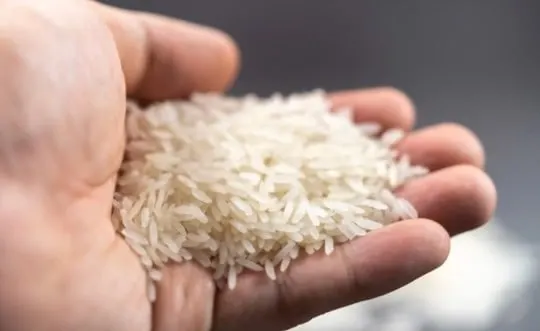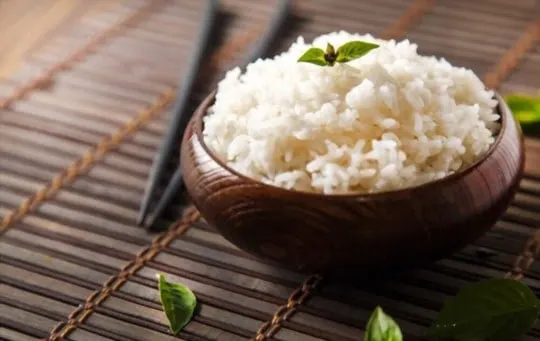Basmati and Jasmine are very similar in appearance and taste. However, there are some key differences.
This guide will show you how to tell the difference and which one is best.
There are many types of rice available at any grocery store.
Over 40,000 different varieties are available all over the globe. That’s quite a lot of rice.
Today we will be talking about Jasmine and Basmati rice, two long-grain varieties of aromatic rice that are very popular.
Both are extremely popular Asian varieties, so people often confuse them.
Both look similar, so it is not surprising.
It’s easy to spot the differences once you know where to look.
Please continue reading to find out their key differences, the best uses for each, how to distinguish them, and the best way to prepare them.
What is Jasmine Rice?

Jasmine rice, also known locally as Khao Hom Mali or Thai curry, is an ingredient in many Southeast Asian cuisines.
It’s often used in spicy vegetable curry or chicken curry.
Sometimes it can even be used to make sushi.
It was originally grown for the Royals of Thailand (then known as the Kingdom Of Siam), so it certainly had a reputation for being a premium variety.
Other varieties of Jasmine Rice can be grown in nearby countries, such as Vietnam, Cambodia, and Laos.
What is Basmati Rice?

Basmati rice, however, was first grown many centuries ago, just below the Himalayas in India, Pakistan.
This long-grain, high-quality rice was eventually exported to the Middle East.
It’s used for many Middle Eastern and Indian dishes.
Basmati can be grown in the USA in certain areas, but it is more common to find imported varieties.
Basmati rice has a unique, nutty flavor and often comes in a variety of colors.
It can be white or brown, depending on where it is harvested.
They are both long-grain types of aromatic rice with a similar appearance.
Differences Between Jasmine and Basmati Rice

Although they were both grown for their aromatic properties, the flavor and texture are very different.
Both types are long-grain white rice, but they have a slightly different taste.
Appearance Difference

Both are long-grain rice varieties, so when raw, they look almost identical.
Jasmine rice grains tend to be more translucent due to their rounded tips.
Basmati rice, however, is longer and thinner with sharper ends.
Once cooked, the difference between Jasmine and Basmati rice becomes much more apparent.
Jasmine is softer and stickier, so it clumps together easier once cooked.
Basmati, on the other hand, remains firm with a slightly springy texture. It also absorbs less water.
Jasmine, Basmati, and Basmati rice come in two colors: brown and white.
White rice is polished and does not contain bran. The brown variant is unpolished to have less carbohydrate.
Brown rice tends to have a slightly nuttier and earthier taste.
Texture Difference
After they are cooked, it is much easier for you to tell the difference.
Basmati grains will stay longer once cooked, almost double their size and be much easier to separate.
Jasmine will have more moisture. When cooked, the grains will clump together.
It will be similar to sushi. Basmati will be soft, and Jasmine will remain moist but not as moist as Basmati.
Since most types of rice contain gluten, which is difficult to digest, it’s best to rinse both Basmati and Jasmine Rice before cooking them.
Aroma Difference
It is also possible to notice a marked difference in Jasmine’s scent and Basmati’s.
Jasmine rice’s scent is floral and aromatic with sweetness.
Basmati, which is literally “full-of-fragrance”, has a more nuanced scent. It is buttery and nutty with a floral tone.
Both types of rice are extremely aromatic, but these subtle differences make them easy to tell apart.
The aromas can be very enticing.
How to Cook Jasmine Rice and Basmati Rice

Basmati and Jasmine, like all rice, are easy to prepare. Here’s how to cook each one.
You will need to wash Jasmine Rice first to ensure it is free from starch and dust. Drain all of the water.
The ideal rice to water ratio will allow you to create fragrant, perfectly cooked Jasmine Rice.
To get the perfect sticky texture, I add 1 to 1/2 cups of water to each cup of rice.
It will take about 20 minutes to cook the rice or until all the water has been absorbed.
Basmati rice has a slightly different process.
Instead of washing the rice before cooking, it is soaked in water for between 45 and 1 hour.
This will enable the grains to absorb some water and ensure even cooking.
Then boil the rice, and add 3 cups of water to 2 cups of Basmati Rice.
You can also add spices to Jasmine and Basmati rice, depending on how you will serve it.
Jasmine rice would be best served with turmeric and Basmati rice with saffron.
Both can be cooked in a rice cooker.
The process is the same: Wash Jasmine rice and cook with a similar rice-to-water ratio.
Basmati rice requires that you soak them, but you’ll use less water than your rice cooker instructions to do so.
So Which One is Better? Bastami vs Jasmine

Basmati or Jasmine rice might be your choice based on their nutritional values.
We’ve got the answers to all your questions about which rice type is healthier.
Like most rice varieties, Jasmine as well Basmati are complex carbohydrates.
They are a great source of energy that can be easily digested and have zero cholesterol.
According to caloric value, a cup of Jasmine contains 238 calories, while a cup of Basmati rice contains 191 calories.
Basmati rice is half as easy to digest and metabolize as Jasmine rice regarding their glycemic index (or how quickly they can be metabolized).
The lower GI will keep blood sugar and insulin levels in check.
Basmati rice is the best choice for those who want to control their weight, feel full for longer periods, and reduce calories.
Both these varieties of rice have an unpolished brown version that contains more fiber and fewer carbohydrates.
It also has a higher iron content.
It is generally healthier to choose unpolished brown rice for Jasmine rice or Basmati rice.
But if you’re looking to save a little money, the polished white rice doesn’t affect either types’ taste or flavor.
You may even be able to find these varieties in bulk at larger grocery chains or Asian markets for much less than a per-pound price.
Basmati is more fragile and needs more care during storage, which is another reason why white polished is chosen by many buyers.
Conclusion
In conclusion, both the Basmati and Jasmine varieties of rice are delicious.
The smell, texture, and taste of these two types of rice are undeniably different.
These subtle differences make it easy to tell them apart, though.
So does their nutritional value.
Basmati has lower calories but a higher glycemic index, which helps control blood sugar.
It is the healthier choice.
